A tradition of medieval banquets and Brueghelian feasts has left its mark on the Belgians, who love nothing better than a hearty, convivial meal with family or friends. Large family groups get together on Sundays and public holidays for a long, lazy lunch stretching far into the afternoon.
Large numbers of tourists mean that eating out in Bruges is more expensive than in other cities, and the high turnover of clientele means that restaurants in prime locations need not fear for their reputation. In addition, with no major student population, there is little demand for dining on a shoestring, so budget options are few and far between.
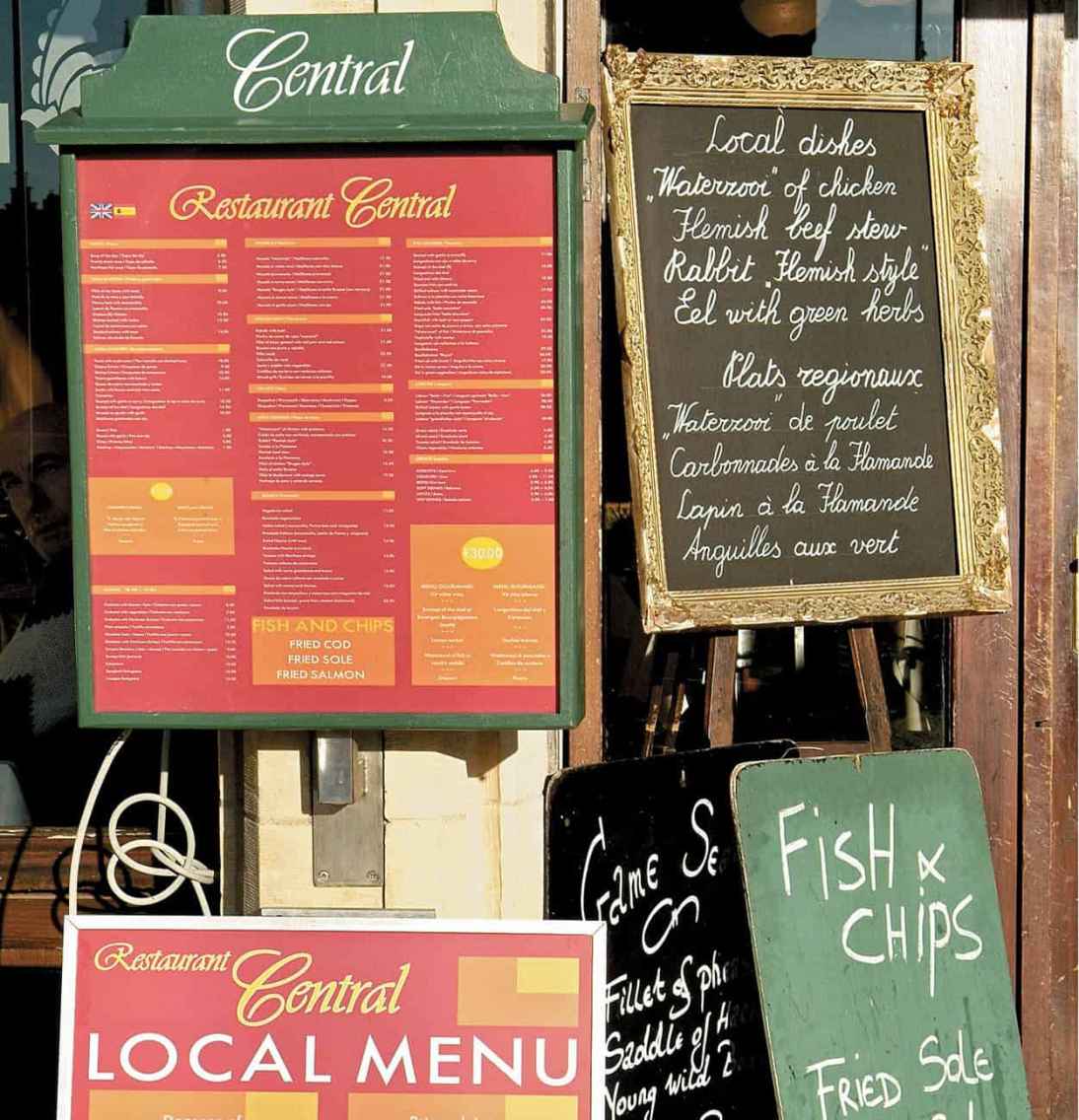
Flemish and international fare
Glyn Genin/Apa Publications
Local cuisine
In Flanders, the regional cuisine is dominated by fish and seafood, grilled meats and fresh seasonal vegetables. Brussels is famous for its stoemp (mash with vegetables, served with sausage) and meatballs in tomato sauce, while Wallonia has excellent mushrooms, game and wild boar from the Ardennes, cooked in rich, fruity sauces enhanced with beer. Mussels, the nation’s favourite food, are in fact imported mostly from the Netherlands. And of course, everyone eats fries.
Typical dishes include a dark beef stew cooked for hours with beer (Vlaamse stoofkarbonaden/carbonades flamandes) and waterzooï , a Ghent stew of fish or chicken, potatoes, carrots and onion in a thin, creamy sauce. In season from August to April, mussels (mosselen) are cooked in a thin stock of celery and onion and served in a large black pot – use an empty shell as a pincer for eating the rest – accompanied by fries and mayonnaise. Game dishes are mainly available in autumn and winter, while Belgian endive wrapped in ham and baked in a white sauce topped with cheese (gegratineerd witloof) is another warming winter dish. Shrimp croquettes, a starter of tiny shrimps mixed with béchamel sauce and deep-fried in breadcrumbs, served with a sprig of deep-fried parsley, is a year-round favourite. And every chef has his own recipe for eel in green sauce (paling in‘t groen) , a light dish where the eel is cooked with a herby mixture of chervil, spinach, parsley, sorrel and tarragon and lemon balm.
Few Belgians are vegetarians, so visiting veggies should avoid Belgian cuisine or they may find themselves stuck with omelettes and vegetable side dishes. Lebanese, Oriental, Indian and some Italian restaurants will offer many tastier options.
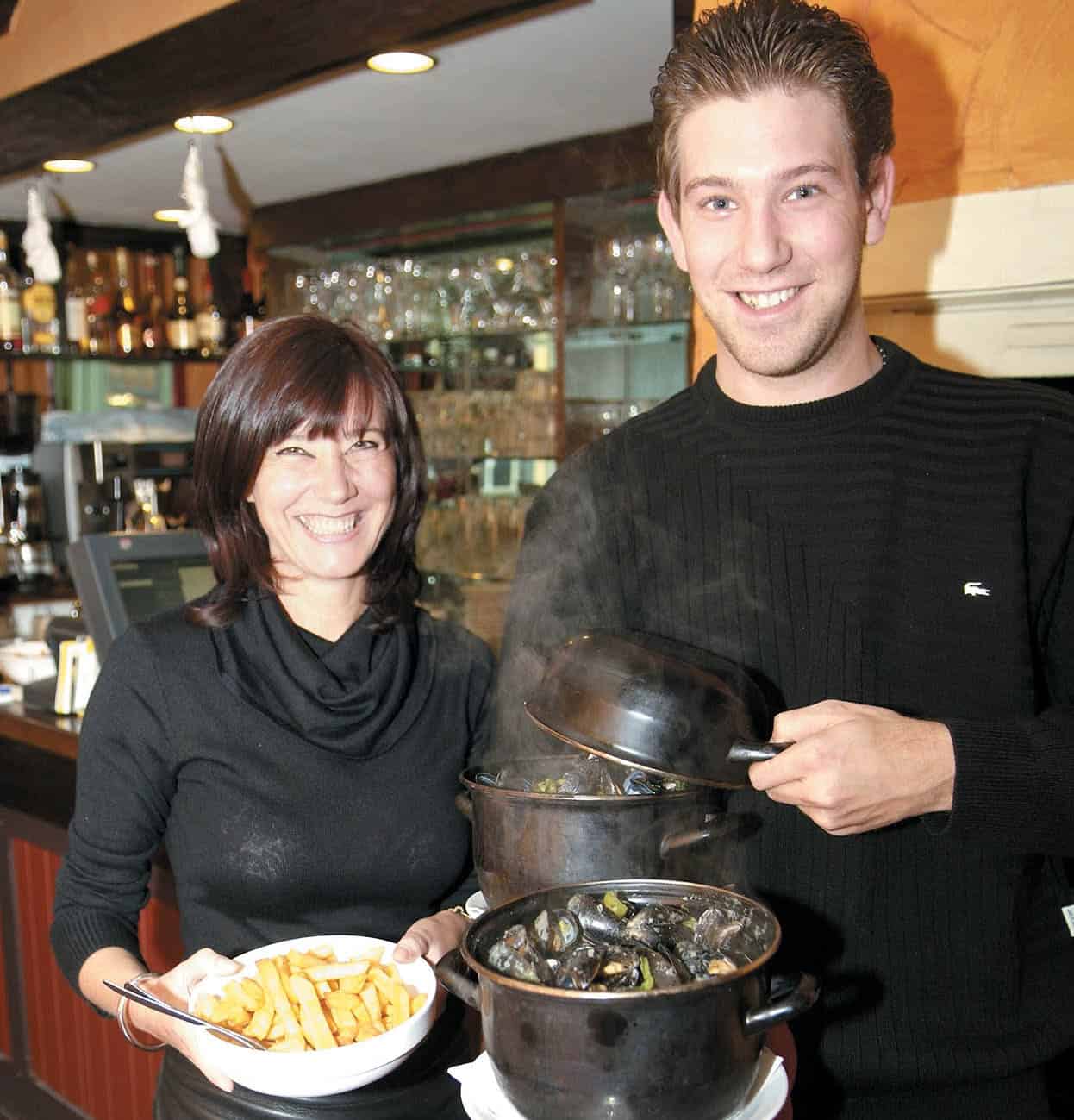
Classic moules frites
Glyn Genin/Apa Publications
Where to eat
Restaurants
Everyone in Belgium dines out, and there are restaurants to suit all tastes. Neighbourhood establishments – many serving international cuisine such as Greek, Lebanese or Italian – will have paper tablecloths and toothpicks in a plastic pot; the formal variety will serve artful creations inspired by French cuisine, and have a dedicated wine waiter. Chain restaurants are unheard of beyond fast-food outlets; the majority are characterful family-run firms that take pride in serving well-presented, good food. Staff are likely to have followed professional training and can advise on dishes and wines.
Many of the high-end establishments are owned by chefs who have made their name working in the best kitchens in the business, and established enough credibility to stamp their personality on a solo venture, designing a unique menu style. Since the country is so small – and Flanders and Wallonia almost separate countries within themselves – reputations and career history are widely known and discussed by food critics, prompting locals to travel a fair distance for a good restaurant. They are mainly open from noon–2 or 2.30pm and 6.30–10pm.
Brasseries
There is no exact definition for the title, but for our purposes brasseries are open all day for drinks and prioritise tables for diners around mealtimes. Less formal and more lively than a restaurant, they will serve a full, predictable menu of North Sea fish dishes, salads, steaks and classics like Belgian beef stew, chicory gratin and rabbit cooked in cherry beer, plus a standard selection of desserts: chocolate mousse, tarte Tatin, crème brûlée and ices. The large majority of tourist-focused restaurants in Bruges are brasseries; several will also serve food outside standard mealtimes (but if they say ‘The kitchen is closed,’ you will get a microwaved dish).
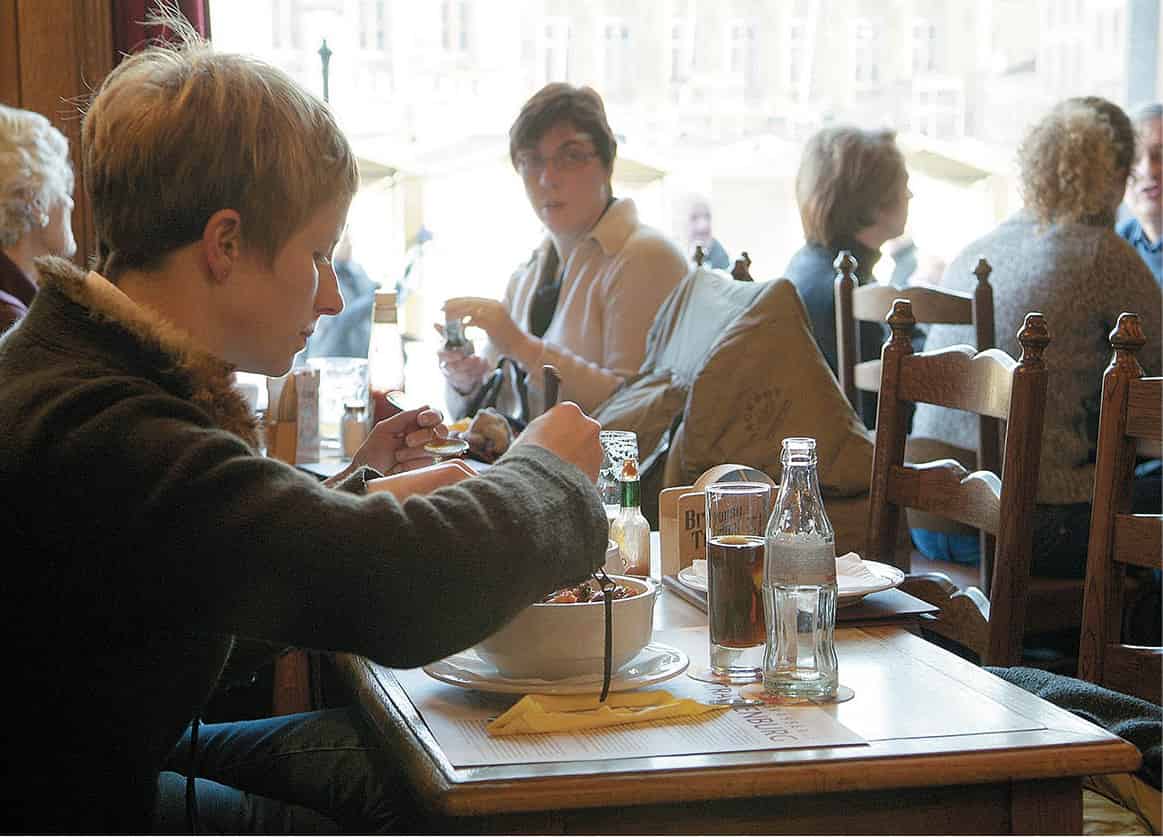
Tucking into a stew
Glyn Genin/Apa Publications
Bars and cafés
Many bars do basic menus, such as soup, spaghetti Bolognese, omelettes and toasted sandwiches. The cuisine is not fantastic, but is perfectly satisfying for empty bellies. Most cafés serve a complimentary nibble when you buy a round of drinks: a sweet biscuit with a hot drink, peanuts with cold drinks. In addition, many also offer a ‘mixed portion’ for a few euros – a plate of cheese or salami chunks, served with mustard, pickles and celery salt. Shared between 2–4 people these make for a filling snack with a few beers.
Tearooms
Tearooms are a feature of the coast and in Bruges; they are uncommon elsewhere in the country. Targeted squarely at day-trippers, they serve light lunches and afternoon snacks such as waffles, pancakes and ices, mainly with hot or soft drinks, although many also serve alcohol. In Bruges, they also offer a good-value alternative to hotel breakfast, if this is not included in your room price.
Food and Drink Prices
Throughout this book, we have used the following price guide for a two-course meal for one, with glass of house wine:
€€€€ = over 100 euros
€€€ = 60–100 euros
€€ = 30–60 euros
€ = below 30 euros
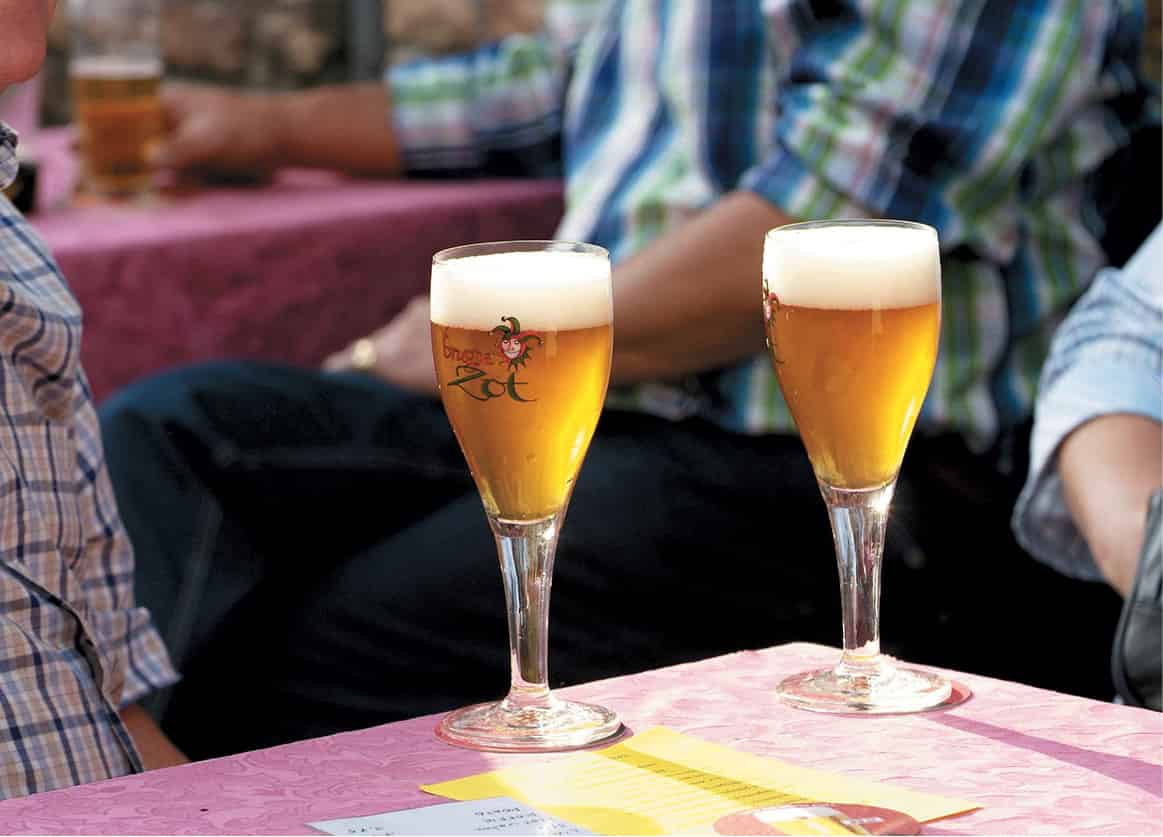
Brugse Zot, a local beer
Glyn Genin/Apa Publications
Drinks
Beer
Belgium produces around 500 types of beer, and each brand must be served in its own distinctive glass. There used to be thousands of local breweries – just one survives in Bruges – but few could compete with the Leuven-based brewer of Stella Artois, Hoegaarden, Leffe and Jupiler. With roots that can be traced back to 1366, it is now the world’s no. 1 brewer, renamed AB InBev following a merger with Anheuser-Busch in 2008.
Beer is served chilled from the tap or the bottle. Typical local varieties include the following:
Lambic beers are wild beers, exposed to wild yeast during fermentation. Gueuze is one type of lambic, which are often quite sour and dry and to which fruit flavours are often added. Kriek is a lambic beer fermented with Morello cherries, giving it its characteristic dark-red hue.
Trappist beers are brewed in an abbey under the control of Trappist monks and are top-fermented ales. Of 171 Trappist monasteries in the world, seven produce beer, six of them in Belgium: Chimay, Orval, Rochefort, Westmalle, Westvleteren and Achelse Kruis.
White beer (witbier) is cloudy and often comes with a slice of lemon. Hoegaarden and Brugse Tarwebier are two varieties.
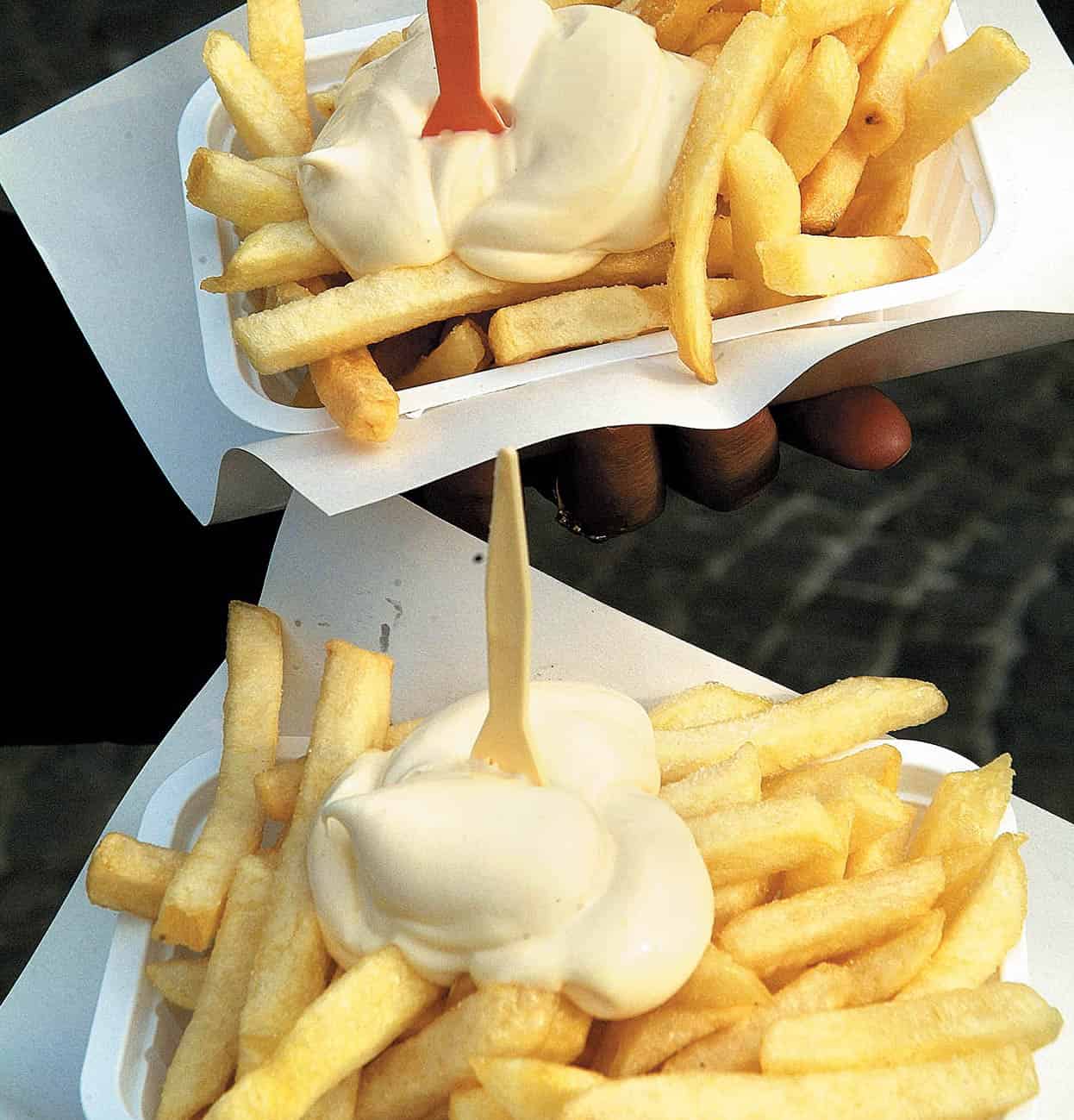
Fresh from the fries van
Glyn Genin/Apa Publications
Genever
Belgian gin, increasingly hard to find, is made from distilled grains (usually barley, which gives it more body than English gin), flavoured with juniper berries, caraway seeds or fennel. This was the tipple that 17th-century British troops discovered during the Dutch War of Independence against the Spanish, giving them ‘Dutch courage’. It comes in three varieties: Oude, the old, straw-coloured, pungently sweet version; Jonge, a younger, more delicately flavoured variety; and Korenwijn, which is cask-aged with a high percentage of malted spirit.
Mineral water
The hilly Ardennes in southern Belgium has several mineral-water sources. Many of these are bottled for sale, including Spa, Chaudfontaine and Bru. Tap water is perfectly drinkable, but few restaurants will be happy to serve it with a meal.
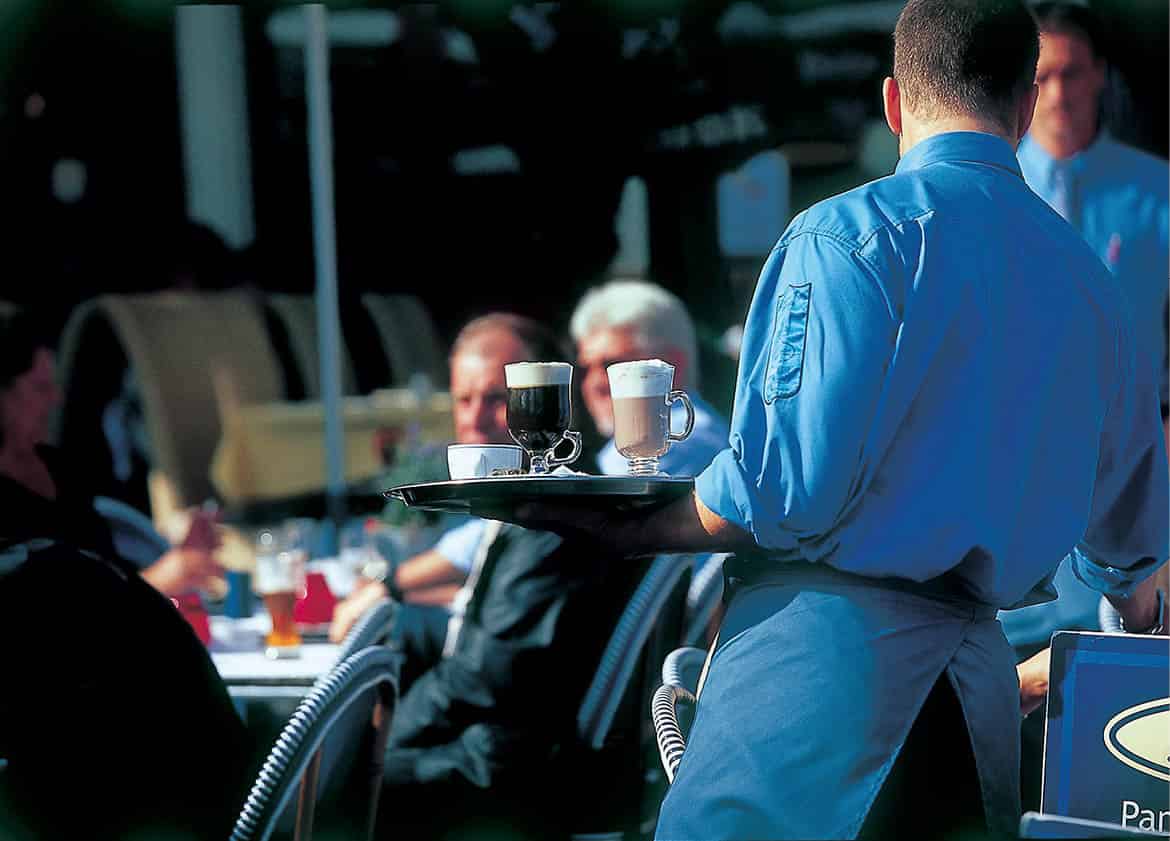
Café life on the Markt
Gregory Wrona/Apa Publications
Tea and coffee
Tea in Belgium is invariably insipid, served as a cup of hot (not boiling) water with a flavourless bag on the side. Fruit-flavoured and herbal teas are widely available, however, and commonly drunk at the end of a meal in the evening. Fresh mint tea, inspired by the Moroccan community, may be available in trendy places.
Coffee is better: standard coffee (koffie) comes in a medium-sized cup and saucer with a dose of creamer on the side; milky coffee (koffie verkeerd) is usually a glass with a dose of espresso and hot milk. Cappuccino is usually made with a dollop of sweet, whipped cream on a black coffee and not frothy milk.
Large coffee chains ubiquitous elsewhere that serve vats of milky coffee have only recently reached Belgium.
The fries van (frietkot) – usually a fixed caravan – is an institution in every Belgian town; perfect for a budget munch on the go, and no calories spared. In Bruges, the frietkot has pride of place on the Markt, in front of the Belfry.
Chips are cut thick and fried twice for the unique Belgian consistency – an initial long fry to cook the potato, then a rest, then a hotter flash-fry for the crunchy edge – and served with salt added, wrapped in a paper cornet or on a plastic tray (bak). The server will ask if you want them open – the classic way, to eat standing up by the van – or to take away (Om mee te nemen) , wrapped in paper.
Sauces cost about 50 cents extra and include mayonnaise, tartare, ketchup, curry-ketchup, spicy mayo mixes Samourai and Andalusian sauces, and red-hot Pili Pili. You can ask to have the sauce on the side, in a mini plastic tray, for dipping.
The vans also sell soft drinks and a variety of meat accompaniments: meatball (bal) , meat stick (fri-candel) , burger, brochette (wooden skewer with meat and veg).
For the max-out meal, go for a mitraillette (literally, machine-gun): a long baguette roll filled with a brochette, salad and fries, and lathered with sauce.